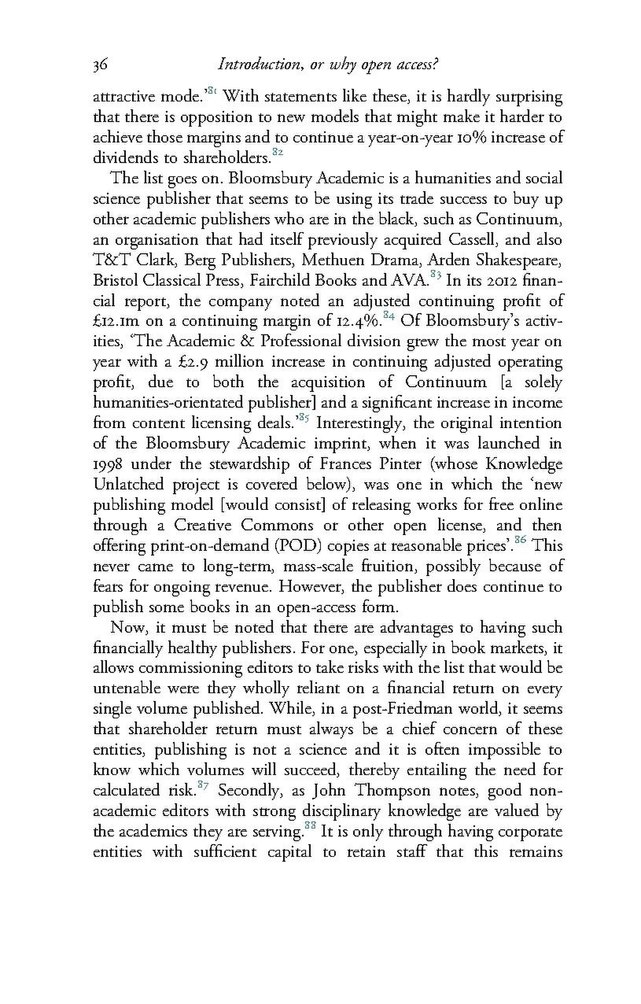attractive mode.’81 With statements like these, it is hardly surprising that there is opposition to new models that might make it harder to achieve those margins and to continue a year-on-year 10% increase of dividends to shareholders.82
The list goes on. Bloomsbury Academic is a humanities and social science publisher that seems to be using its trade success to buy up other academic publishers who are in the black, such as Continuum, an organisation that had itself previously acquired Cassell, and also T&T Clark, Berg Publishers, Methuen Drama, Arden Shakespeare, Bristol Classical Press, Fairchild Books and AVA.83 In its 2012 financial report, the company noted an adjusted continuing profit of £12.1m on a continuing margin of 12.4%.84 Of Bloomsbury’s activities, ‘The Academic & Professional division grew the most year on year with a £2.9 million increase in continuing adjusted operating profit, due to both the acquisition of Continuum [a solely humanities-orientated publisher] and a significant increase in income from content licensing deals.’85 Interestingly, the original intention of the Bloomsbury Academic imprint, when it was launched in 1998 under the stewardship of Frances Pinter (whose Knowledge Unlatched project is covered below), was one in which the ‘new publishing model [would consist] of releasing works for free online through a Creative Commons or other open license, and then offering print-on-demand (POD) copies at reasonable prices’.86 This never came to long-term, mass-scale fruition, possibly because of fears for ongoing revenue. However, the publisher does continue to publish some books in an open-access form.
Now, it must be noted that there are advantages to having such financially healthy publishers. For one, especially in book markets, it allows commissioning editors to take risks with the list that would be untenable were they wholly reliant on a financial return on every single volume published. While, in a post-Friedman world, it seems that shareholder return must always be a chief concern of these entities, publishing is not a science and it is often impossible to know which volumes will succeed, thereby entailing the need for calculated risk.87 Secondly, as John Thompson notes, good nonacademic editors with strong disciplinary knowledge are valued by the academics they are serving.88 It is only through having corporate entities with sufficient capital to retain staff that this remains
